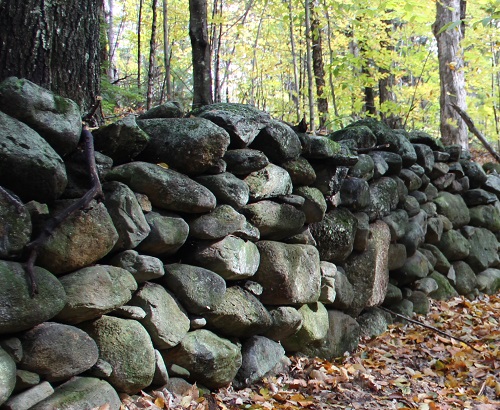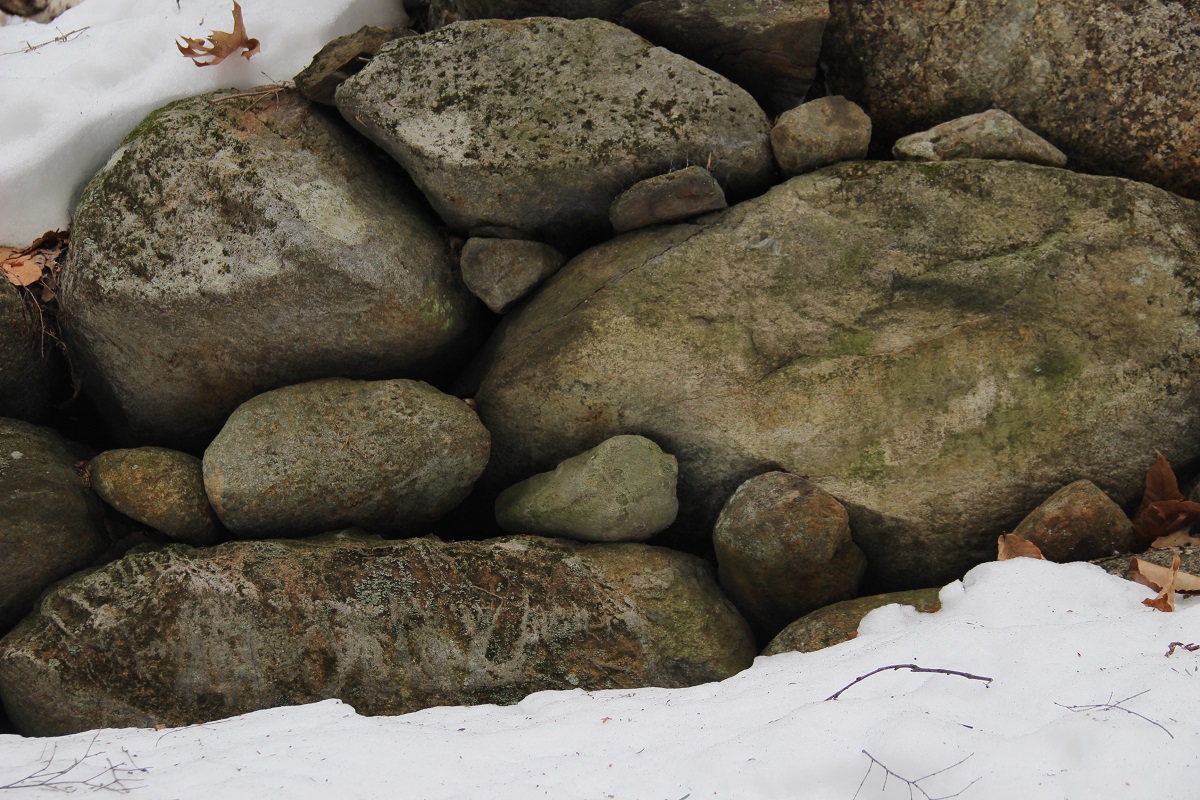 May 2019 - One of my favorite woods walks is the Chestnut Hill section of the Joe English Reservation in Amherst. A unique feature of the area are the piles of stones that are scattered randomly across the hillside. These piles are identical to the cairns one sees above tree line in the White Mountains. But where did these piles of stones come from, and why are they in the middle of the forest? The answer is that the farmer who originally cleared and tilled the land chose to dispose of the glacial till by piling the stones into mounds. The farmer then plowed around the piles and planted his crops. A visitor viewing the cleared fields with the stone piles might have said “well, that’s one way to do it.”
May 2019 - One of my favorite woods walks is the Chestnut Hill section of the Joe English Reservation in Amherst. A unique feature of the area are the piles of stones that are scattered randomly across the hillside. These piles are identical to the cairns one sees above tree line in the White Mountains. But where did these piles of stones come from, and why are they in the middle of the forest? The answer is that the farmer who originally cleared and tilled the land chose to dispose of the glacial till by piling the stones into mounds. The farmer then plowed around the piles and planted his crops. A visitor viewing the cleared fields with the stone piles might have said “well, that’s one way to do it.”
Another favorite outing is French Road, a Class VI road in Lyndeborough which abuts the PLC Rose Mountain Foothills Preserve. Not far from the road, near the French homestead cellar hole, is an enormous pile of stones, within what was once an 8-9 acre field. This pile of stones has the footprint of a small cabin. This farmer chose to dump all of the stones turned up in the clearing/tilling process into a single pile. The area covered by the stone pile was not usable, but the rest of the field was. Our imaginary visitor of the time would have concluded that this was another way to do it. A bonus walk along French Road is the “artisan” stone walls that line the road near where the French house once stood. Based on the time and precision involved, either Mr. French or a subsequent owner was affluent enough to hire a skilled wall builder. I’m guessing Mr. French was the affluent one, based on the cellar hole.
Stone wall scholar Robert Thorson, author of the book Stone by Stone, refers to stone walls as “linear landfills”. He maintains that stone walls were merely a way to get glacial till out of the way. In other words, building walls was yet another -- and ultimately the most common -- way to do it in our corner of New England. When a field was cleared, the stones were moved to the edge of the field and piled into walls. A single stack wall, or even a double wall, covers less precious land than stones that are just dumped willy-nilly at the edge of the field. A variation on this theme was to move the stones to the edges of the property and build the walls there, establishing a clear property line. These walls are a boon to land surveyors to this day.
Thorson also questions the idea that the function of stone walls was to keep livestock in pastures (or other animals out of the farmer’s fields). There are many examples today of an abandoned stone wall with a sheep fence next to it, or an abandoned stone wall with a barbed wire fence running along it. If the stone wall was able to enclose the sheep or the cows, there would be no need for the additional fencing. If Thorson is right, then the thousands of miles of stone walls in New Hampshire really were just about getting rocks out of the way of the plow.
by Dave Butler
Dave Butler of Bedford is a member of PLC’s Stewardship Committee, and a volunteer property monitor.
